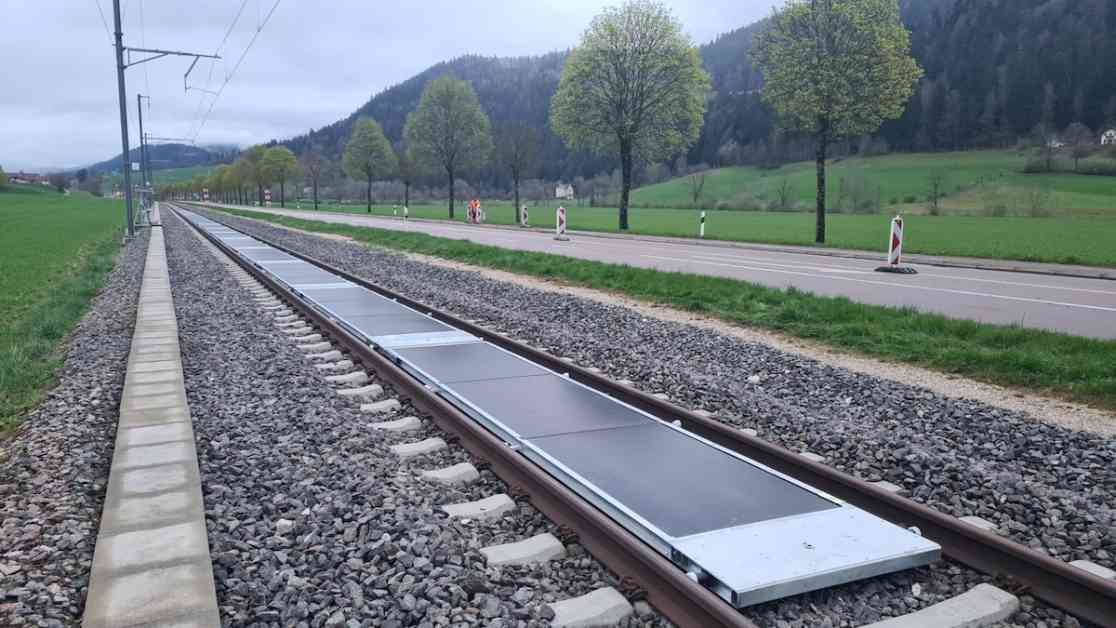A new solar project is underway in Switzerland’s canton of Neuchâtel, where a solar technology startup is taking advantage of the open spaces between railway tracks to install solar panels. Sunways, a photovoltaic inverter manufacturer, has received approval from the Federal Office of Transport to begin deploying solar panels on 100 meters of railway operated by transN.
The company plans to use the solar power generated by the panels in three ways: it can be used to power the railway infrastructure, reinjected into the local electricity network, or even reinjected into the traction energy network that powers the trains. The pilot project will involve the installation of 48 solar panels with a total capacity of around 18 kilowatts, expected to produce 16,000 kilowatt-hours per year at a cost of about $708,700.
Sunways founder Joseph Scuderi envisions a future where the energy produced by the solar panels can be used to power the trains themselves, making them almost entirely self-sufficient. The project initially faced rejection due to concerns about its impact on railway maintenance, but after conducting independent studies and safety analyses, Sunways has been given the green light to proceed with the installation of the panels.
The specialized solar panels are designed to be removable to facilitate maintenance, with cleaning brushes installed on trains to keep them free of dust and debris. Scheuchzer SA, a railway maintenance company, will be responsible for installing the panels using specialized technology. The panels feature anti-glare coatings for safety, and if successful, Scheuchzer SA has the capacity to install up to 1,000 square meters of solar panels daily in a cost-effective manner.
Ongoing testing and safety analyses will be crucial to meeting the requirements set by the Federal Office of Transport. While there has been criticism of solar installations in the Alps, Sunways believes that their technology offers a sustainable solution that can increase solar-powered electricity production without disrupting train traffic or maintenance work on the tracks.
The pilot project will be monitored and analyzed over the next few years, with the potential to scale up to cover all railways in Switzerland and meet a significant portion of the country’s electricity demand. As renewable energy expansion becomes increasingly important for reducing emissions, projects like the one being undertaken by Sunways could play a key role in advancing sustainable energy solutions.
In conclusion, the solar project on active railway tracks in Switzerland represents an innovative approach to harnessing solar power in a unique location. With the potential to revolutionize the way trains are powered and contribute to Switzerland’s renewable energy goals, this project is an exciting development in the field of sustainable energy.














